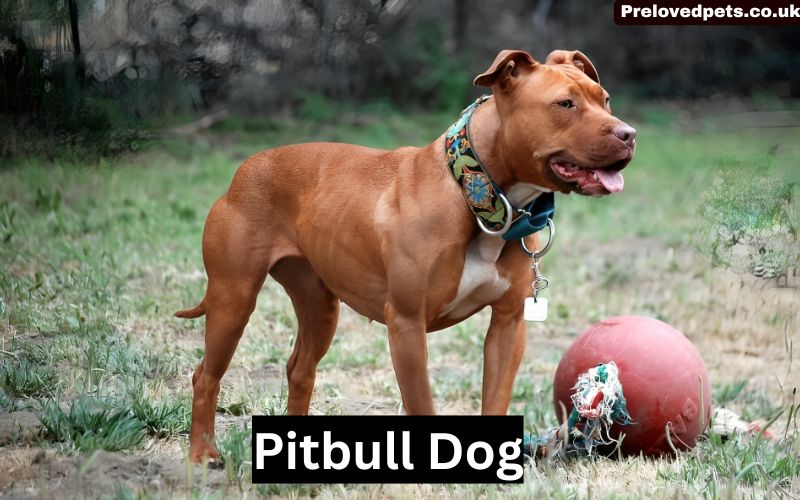Caring for a dog is a rewarding experience, but it also comes with significant responsibilities. Whether you’re a first-time dog owner or a seasoned pet parent, ensuring the well-being of your canine companion is paramount. From understanding their basic needs to dealing with more complex behavioral issues, this guide will provide you with all the information you need to keep your dog happy, healthy, and well-behaved.
Understanding Your Dog’s Basic Needs
Before diving into the specifics of dog care, it’s essential to understand the basic needs of your dog. Dogs, like humans, require a balanced diet, regular exercise, social interaction, mental stimulation, and routine veterinary care. Let’s explore each of these aspects in detail.
1. Balanced Diet and Nutrition
A balanced diet is crucial for your dog’s overall health. Dogs require a mix of proteins, fats, carbohydrates, vitamins, and minerals to thrive. The exact nutritional needs can vary depending on your dog’s age, breed, size, and activity level.
- Puppies require more protein and fat to support their rapid growth.
- Adult dogs need a balanced diet that maintains their energy levels without causing weight gain.
- Senior dogs might require a diet lower in calories and higher in fiber to prevent obesity and digestive issues.
Choosing the Right Dog Food
When selecting dog food, opt for high-quality brands that list meat as the primary ingredient. Avoid foods with excessive fillers like corn and soy, as these provide little nutritional value. Additionally, consider your dog’s specific dietary needs, such as grain-free options for dogs with allergies or special formulas for dogs with sensitive stomachs.
Feeding Schedule
Establishing a consistent feeding schedule helps regulate your dog’s digestive system. Most adult dogs do well with two meals a day, while puppies might require three to four smaller meals. Always provide fresh water and avoid feeding your dog table scraps, as many human foods can be harmful to dogs.
2. Regular Exercise
Exercise is essential for keeping your dog physically fit and mentally stimulated. The amount of exercise your dog needs depends on their breed, age, and energy level.
- High-energy breeds like Border Collies and Labrador Retrievers require more exercise, including long walks, running, and playing fetch.
- Low-energy breeds like Bulldogs or Basset Hounds may be content with shorter walks and indoor play.
Types of Exercise
Incorporate a variety of exercises to keep your dog engaged:
- Walking: Daily walks are a must for all dogs. They provide physical exercise and allow your dog to explore new sights and smells, which is mentally stimulating.
- Playing fetch: This is a great way to burn off energy, especially in a safe, enclosed area like a backyard or dog park.
- Training sessions: Incorporating basic commands and tricks into playtime provides both mental and physical exercise.
- Agility training: For more active dogs, agility training can be a fun way to challenge their minds and bodies.
3. Social Interaction and Mental Stimulation
Dogs are social animals and thrive on interaction with their owners and other dogs. Lack of socialization can lead to behavioral issues such as anxiety, aggression, and excessive barking.
Socialization
Expose your dog to different environments, people, and other animals from a young age. Puppy classes, dog parks, and playdates with other dogs can help your dog develop good social skills.
Mental Stimulation
Mental stimulation is just as important as physical exercise. Boredom can lead to destructive behavior, so keep your dog’s mind active with puzzle toys, interactive games, and training exercises.
4. Routine Veterinary Care
Regular veterinary visits are crucial for maintaining your dog’s health. Your vet can provide vaccinations, dental care, parasite control, and early detection of potential health issues.
Vaccinations
Vaccinations protect your dog from various diseases, including rabies, distemper, and parvovirus. Your vet will provide a vaccination schedule tailored to your dog’s needs.
Parasite Control
Fleas, ticks, and worms can cause serious health issues for your dog. Regular check-ups, along with preventive treatments like flea and tick medication, can keep these parasites at bay.
Dental Care
Oral health is often overlooked but is vital to your dog’s overall well-being. Regular brushing and dental chews can prevent plaque buildup, gum disease, and tooth loss.
The Importance of Barking Mad Dog Care
When it comes to keeping your canine companion in top shape, Barking Mad Dog Care is more than just a catchy phrase—it’s a holistic approach to dog care that emphasizes the importance of understanding your dog’s unique needs. This method integrates balanced nutrition, regular exercise, mental stimulation, socialization, and routine veterinary care to ensure your dog leads a happy, healthy life.
Whether you’re dealing with common behavioral issues like excessive barking or simply want to provide the best possible environment for your pet, Barking Mad Dog Care offers the insights and strategies you need to be a responsible and loving dog owner.
Addressing Common Behavioral Issues
Even the most well-behaved dogs can develop behavioral problems. Understanding the root causes of these issues and addressing them early can prevent them from becoming more serious.
1. Excessive Barking
Barking is a natural behavior for dogs, but excessive barking can be a sign of underlying issues. Dogs may bark excessively due to boredom, anxiety, or to alert their owners to something they perceive as a threat.
Solutions
- Identify the cause: Determine what triggers your dog’s barking. Is it when they are left alone, see other animals, or hear loud noises?
- Training: Use positive reinforcement to teach your dog the “quiet” command. Reward them when they stop barking on command.
- Provide mental and physical stimulation: Ensure your dog is getting enough exercise and mental stimulation to reduce boredom-related barking.
- Consult a professional: If the barking is related to anxiety, consult a dog trainer or behaviorist for guidance.
2. Separation Anxiety
Separation anxiety is a common issue in dogs and can lead to destructive behavior, excessive barking, and even self-harm when left alone.
Signs of Separation Anxiety
- Pacing or drooling when you prepare to leave.
- Destructive behavior like chewing furniture or digging.
- Excessive barking or howling when left alone.
- Attempting to escape from their crate or home.
Solutions
- Gradual desensitization: Start by leaving your dog alone for short periods and gradually increase the time. Reward them for calm behavior when you return.
- Create a positive association: Give your dog a special treat or toy that they only get when you leave.
- Avoid emotional departures: Stay calm and avoid making a fuss when leaving or returning home.
- Consult a professional: In severe cases, a behaviorist or vet may recommend specialized training or medication.
3. Aggression
Aggression in dogs can be dangerous and is often a response to fear, pain, or territoriality. Addressing aggressive behavior early is crucial to prevent escalation.
Types of Aggression
- Fear aggression: Occurs when a dog feels threatened.
- Territorial aggression: Happens when a dog perceives someone or something as a threat to their territory.
- Resource guarding: Involves aggression over food, toys, or other valued items.
Solutions
- Identify triggers: Understanding what triggers your dog’s aggression is the first step in addressing it.
- Training: Work with a professional trainer to desensitize your dog to the triggers and teach them alternative behaviors.
- Medical evaluation: If aggression is sudden or uncharacteristic, consult a vet to rule out any medical causes.
Grooming and Hygiene
Regular grooming is essential for your dog’s health and comfort. It not only keeps them looking good but also helps prevent skin issues, matting, and infections.
1. Bathing
The frequency of baths depends on your dog’s breed, coat type, and lifestyle. Generally, dogs should be bathed every 4-6 weeks. Use a dog-specific shampoo to avoid irritating their skin.
2. Brushing
Regular brushing helps remove loose fur, dirt, and tangles. The frequency and type of brush needed will depend on your dog’s coat type.
- Short-haired dogs typically require less frequent brushing.
- Long-haired dogs may need daily brushing to prevent matting.
3. Nail Trimming
Overgrown nails can cause discomfort and even lead to injury. Trim your dog’s nails regularly, being careful not to cut too close to the quick, which can cause bleeding.
4. Ear Cleaning
Regular ear cleaning helps prevent infections, especially in breeds with floppy ears. Use a vet-recommended ear cleaner and avoid inserting anything deep into the ear canal.
5. Dental Care
As mentioned earlier, dental care is vital for your dog’s overall health. In addition to regular brushing, consider providing dental chews and scheduling professional cleanings with your vet.
Creating a Safe and Comfortable Environment
Your dog’s living environment plays a significant role in their overall well-being. Ensuring they have a safe, comfortable space to call their own is essential.
1. Crate Training
Crate training provides your dog with a safe space to retreat to when they need rest or when you’re not home. A properly sized crate should be large enough for your dog to stand, turn around, and lie down comfortably.
2. Dog-Proofing Your Home
Just like with a child, you’ll need to dog-proof your home to keep your furry friend safe. This includes:
- Removing toxic plants and securing cleaning supplies out of reach.
- Using baby gates to block off areas you don’t want your dog to access.
- Securing trash cans to prevent your dog from scavenging.
3. Providing Comfort
Make sure your dog has a comfortable bed in a quiet area of the house. Provide plenty of toys to keep them entertained and consider adding a blanket with your scent to help them feel secure.
Traveling with Your Dog
Whether it’s a trip to the vet or a vacation, traveling with your dog requires preparation.
1. Car Safety
Always secure your dog in the car using a crate or dog seat belt to prevent injury in case of an accident. Never leave your dog alone in a parked car, as temperatures can quickly become dangerous.
2. Travel Essentials
Pack all the essentials your dog will need, including food, water, a leash, waste bags, and any medications. If you’re traveling by plane, check the airline’s requirements for traveling with pets.
3. Accommodations
If you’re staying overnight, make sure your accommodations are pet-friendly. Bring along your dog’s bed and familiar items to help them feel at ease in a new environment.
See Also: German Shepherd Husky Mix
Conclusion
Caring for a dog is a long-term commitment that requires time, effort, and dedication. By understanding and meeting your dog’s basic needs, addressing behavioral issues promptly, and providing a safe and stimulating environment, you can ensure that your canine companion lives a happy, healthy life. Remember, a well-cared-for dog is not only a joy to be around but also a loyal and loving friend for years to come.
Whether you’re dealing with the basics of feeding and grooming or tackling more complex issues like aggression and separation anxiety, this comprehensive guide has you covered. With the right approach, you can ensure that your dog is not just a pet, but a cherished member of your family.




